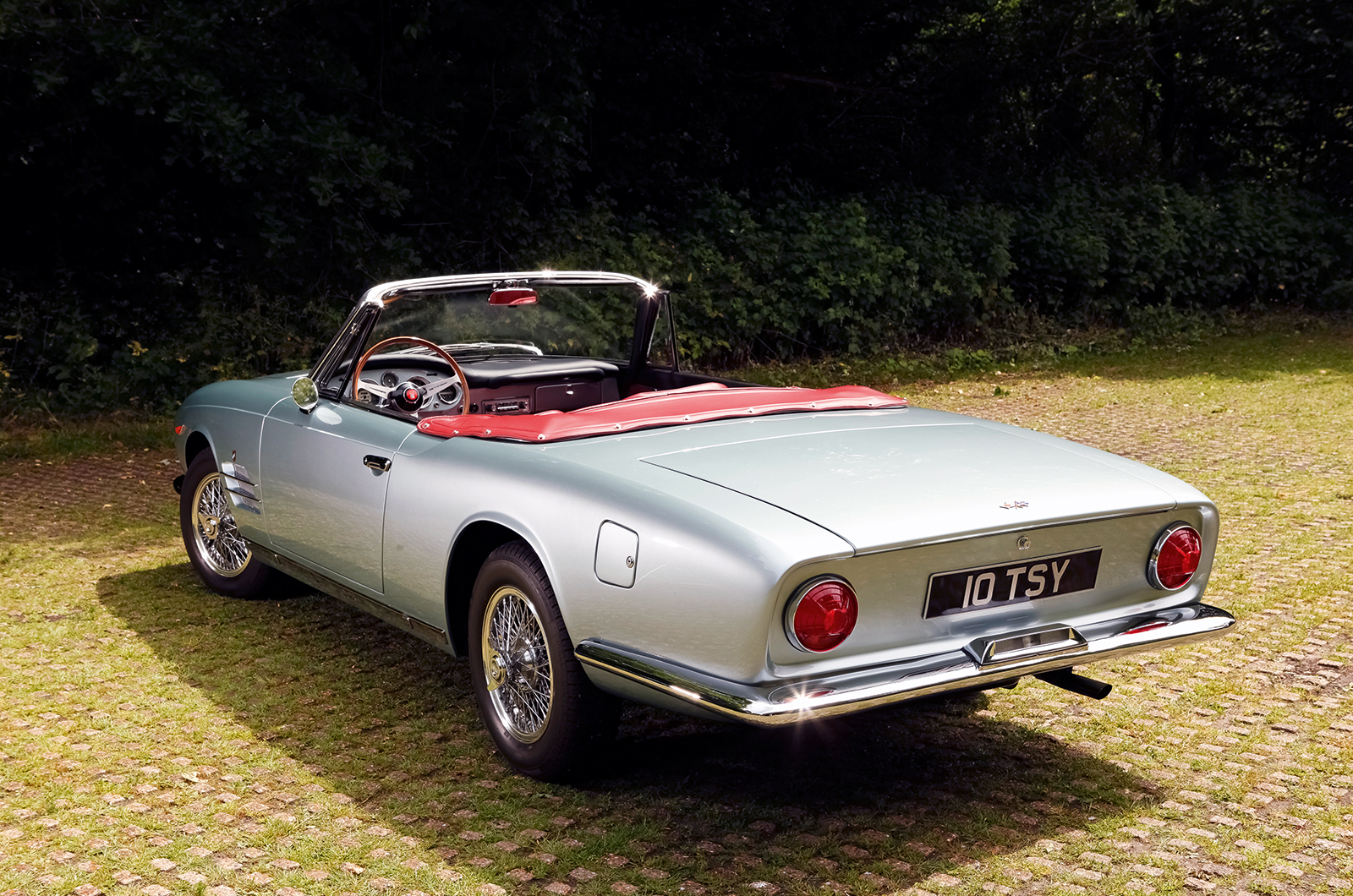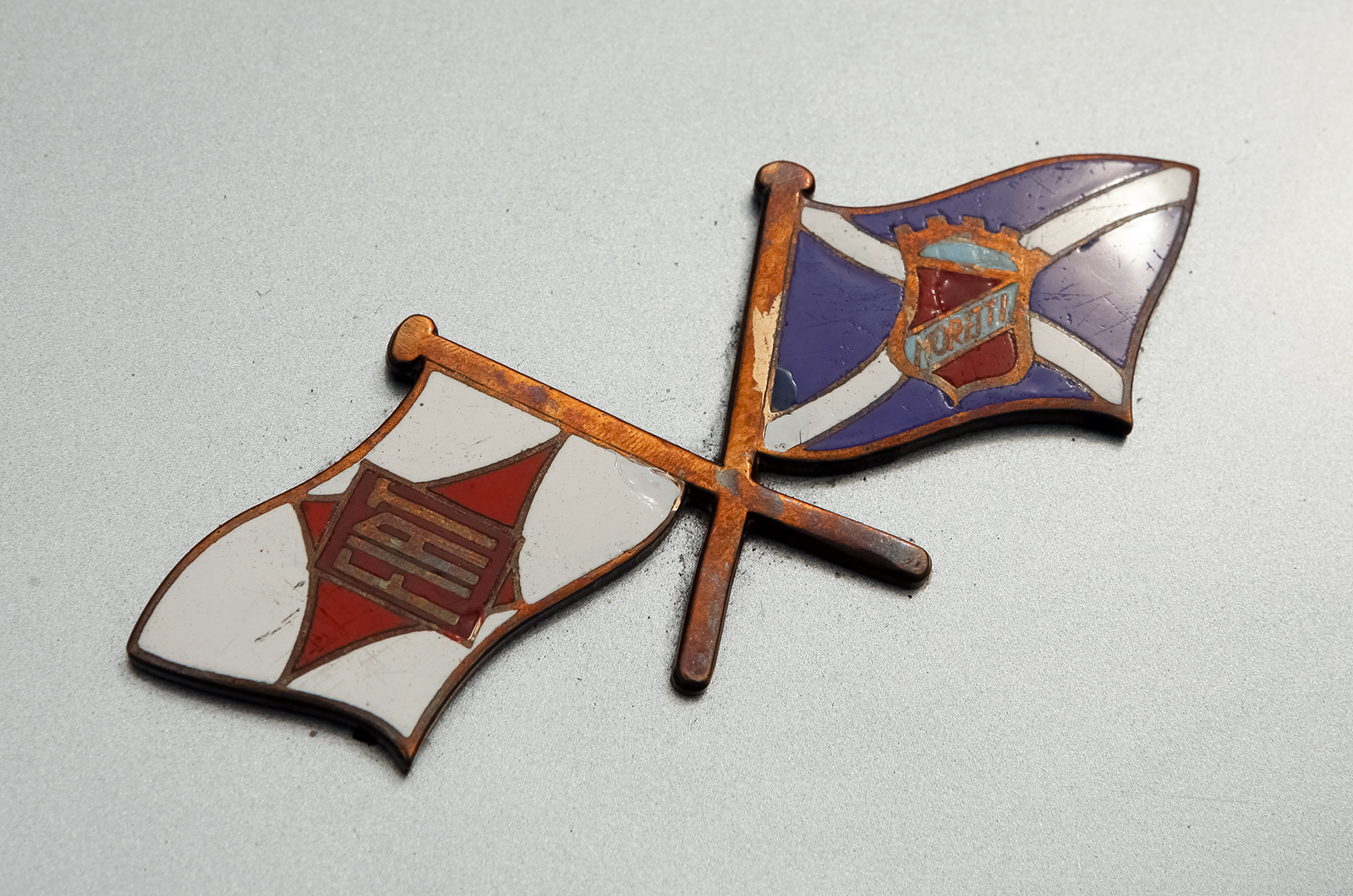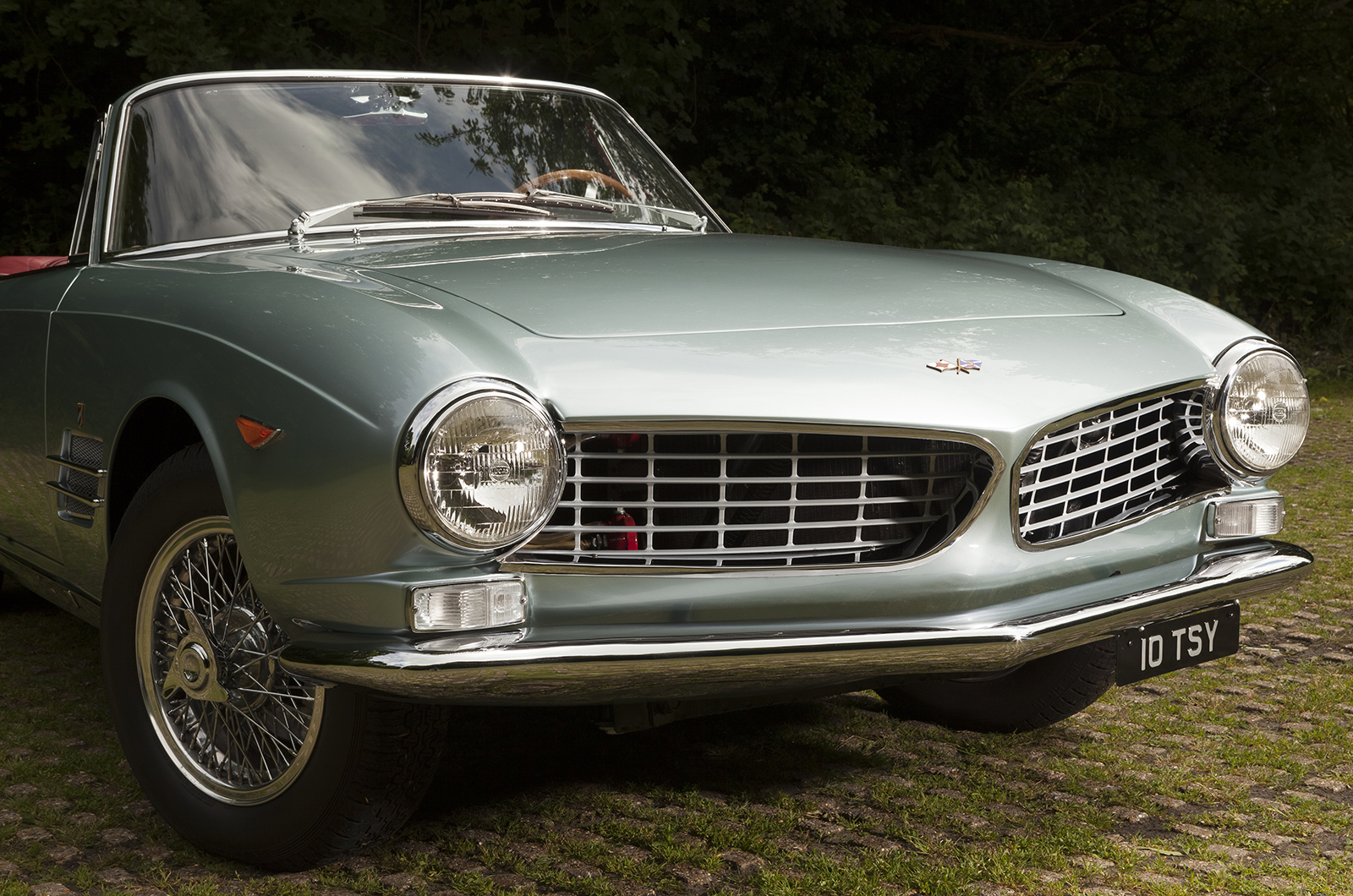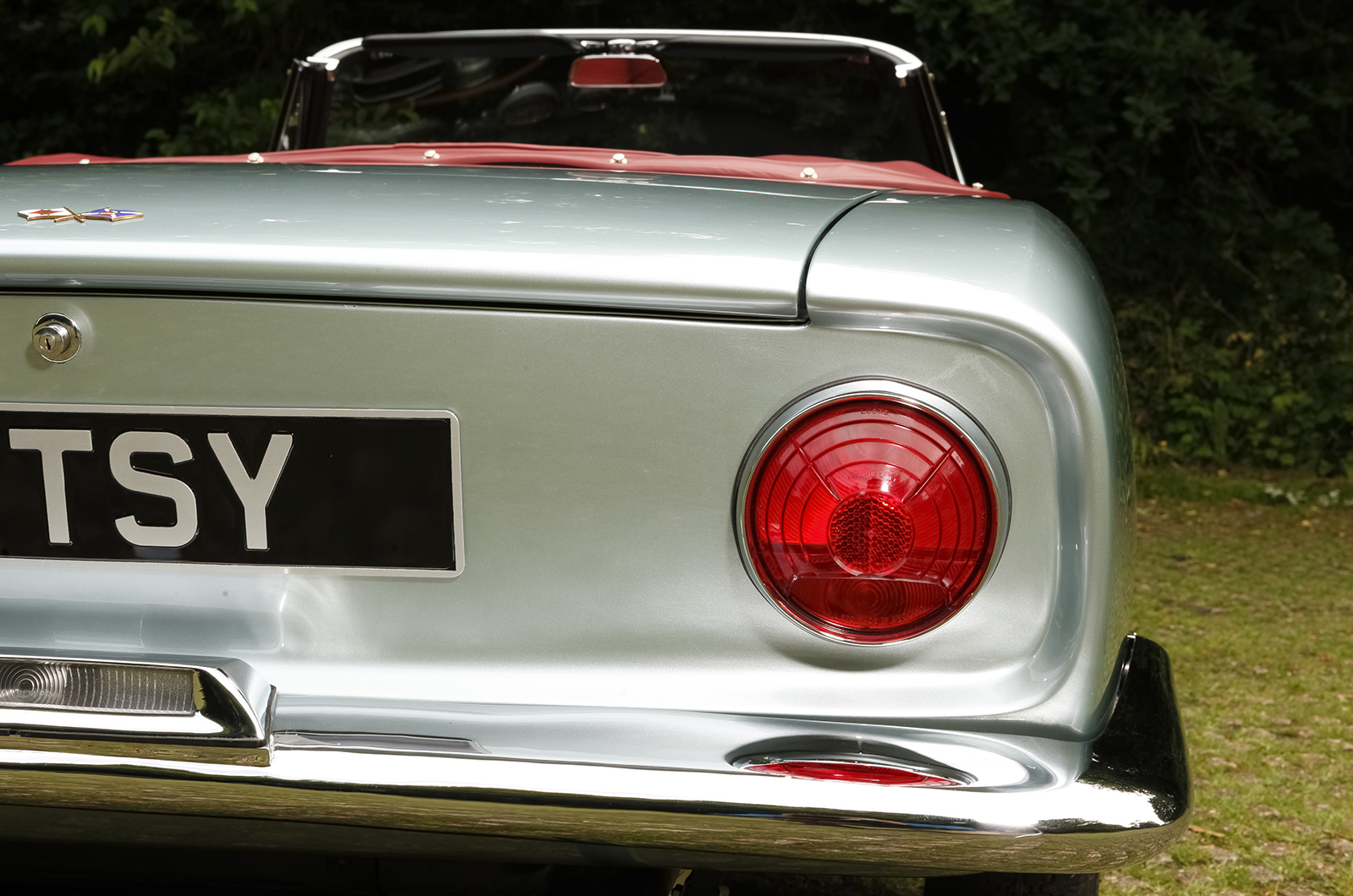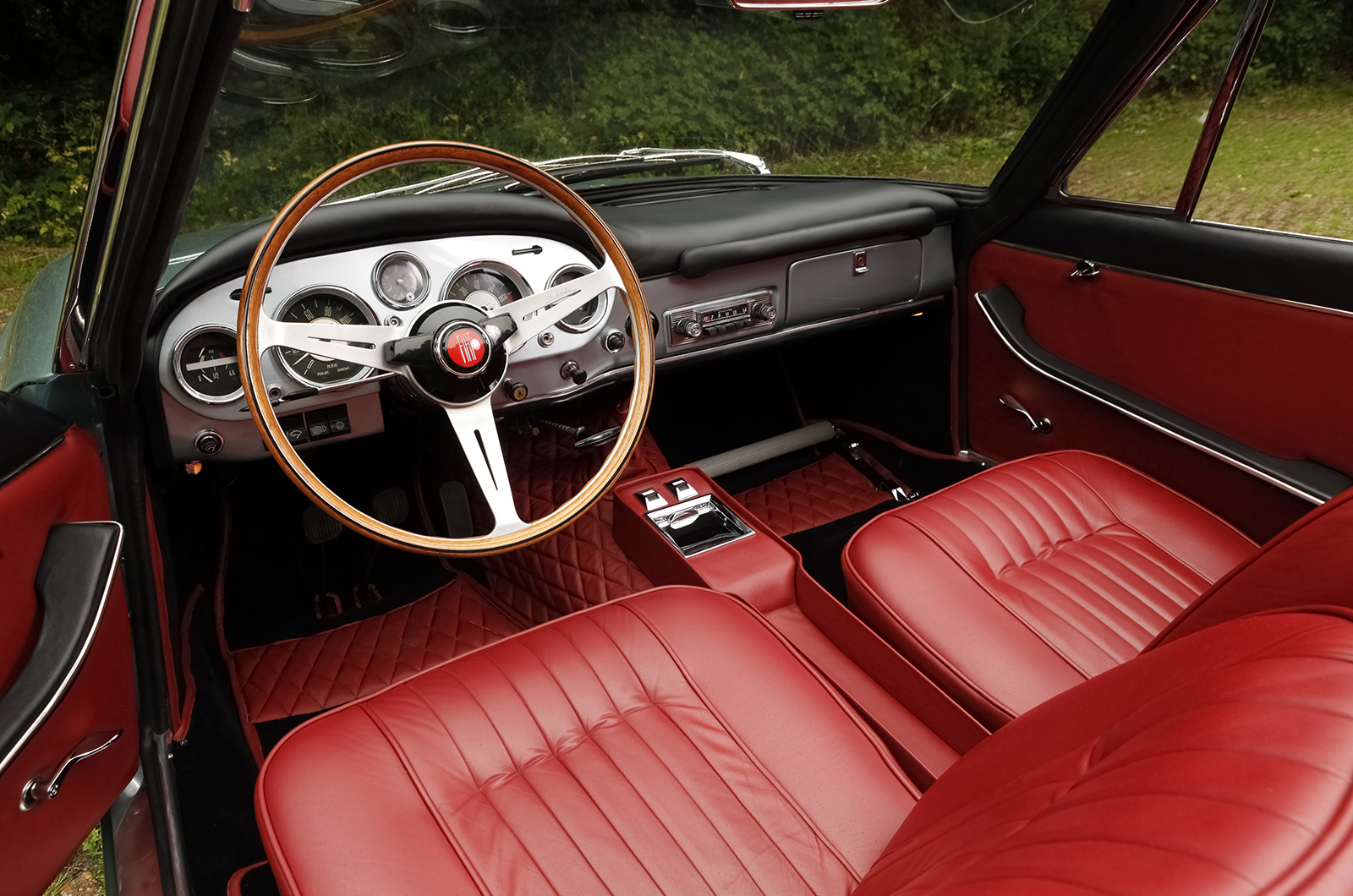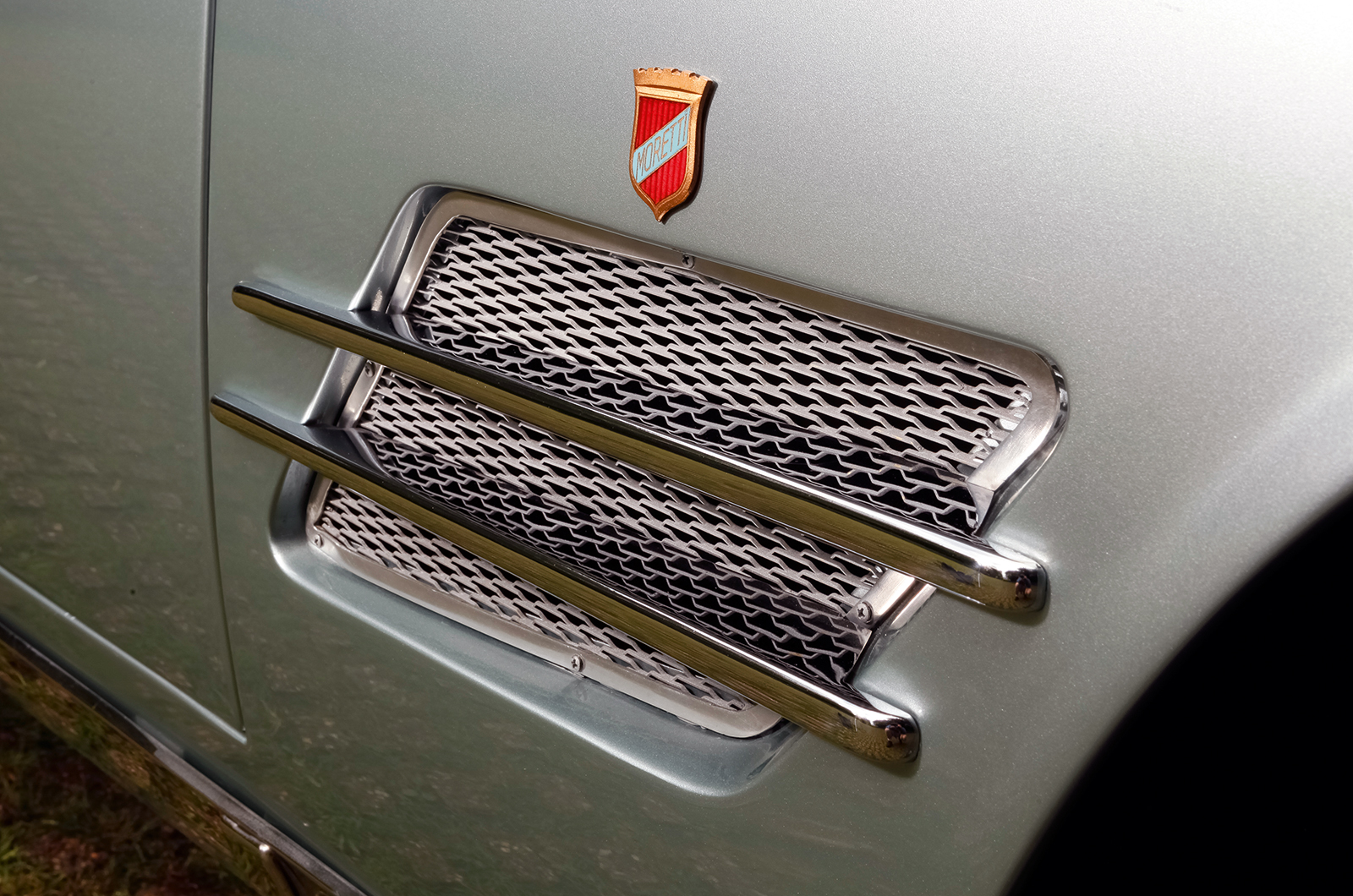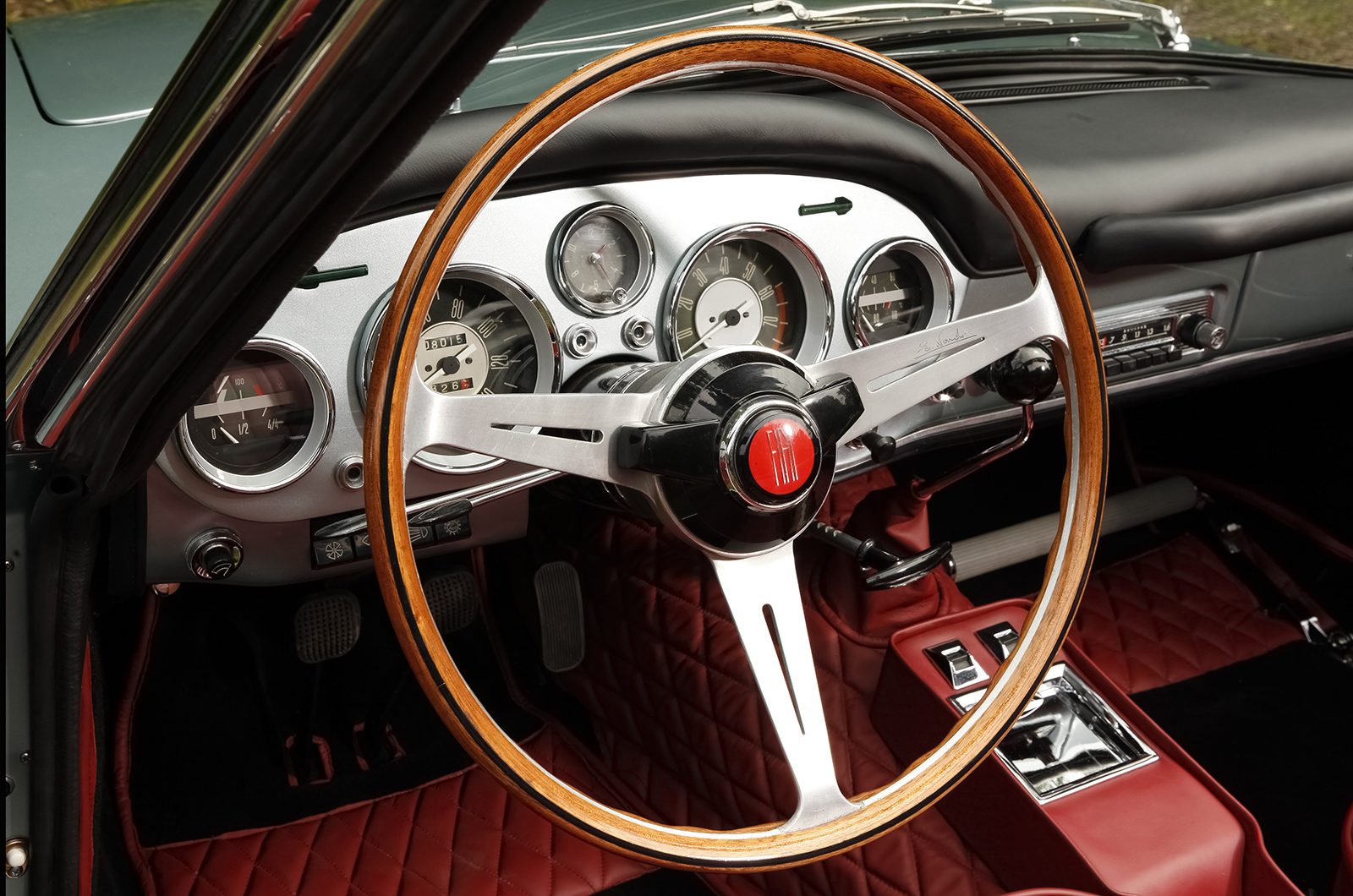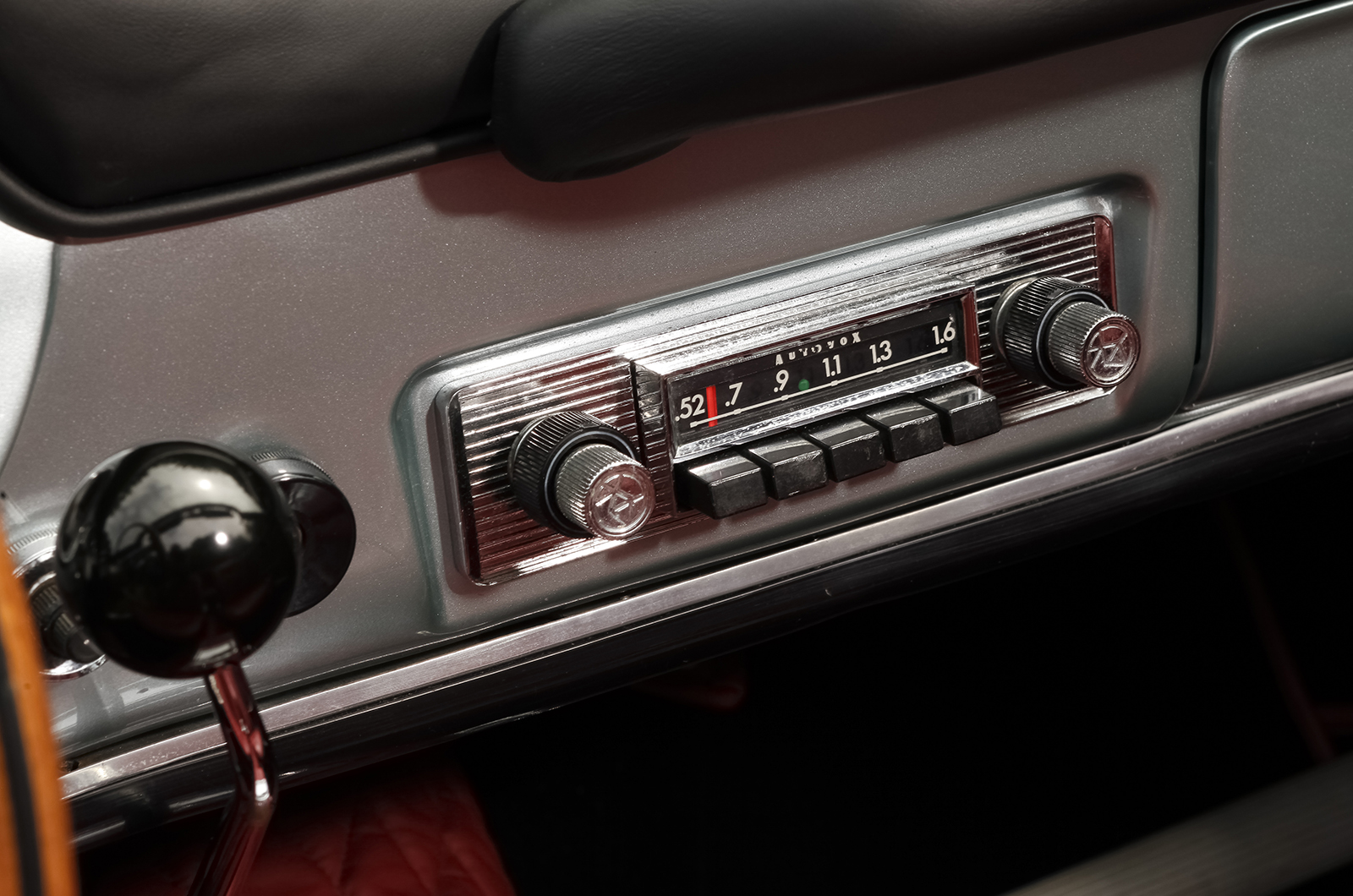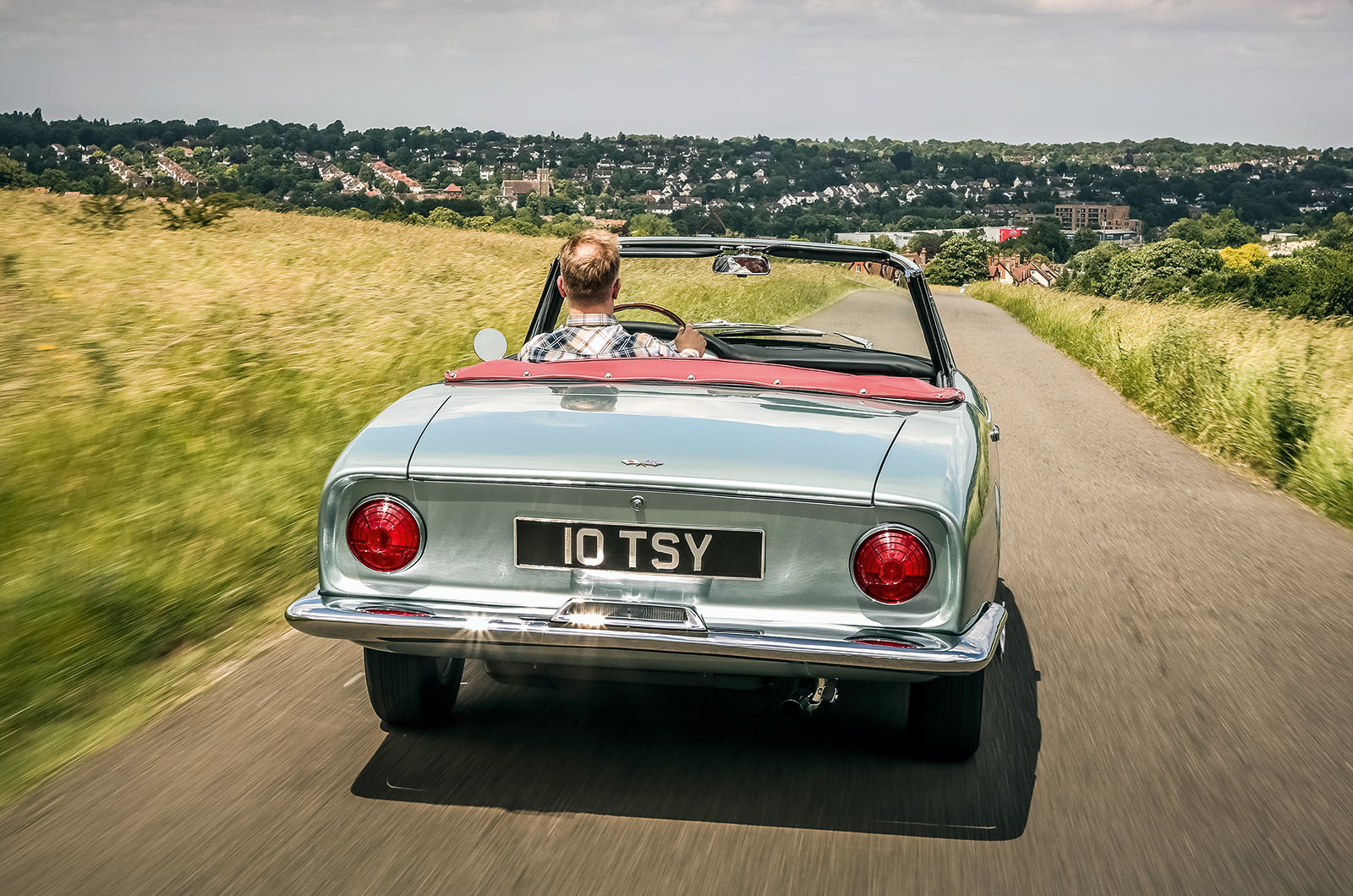As for handling characteristics, it’s hard to tell given our urban test route, but the Moretti doesn’t do anything untoward when driven with a little gusto.
This is more boulevardier than back-road tearaway, but you assume as much.
The cabin clearly displays this roadster's Fiat roots
The real shame is that Moretti didn’t follow through and produce further exotica. Save a one-off, Maserati 3500GT-based machine, it didn’t create anything quite so dazzling in later years.
A return to alternative power sources with the Elettrica (a Fiat 500 loaded to the gunwales with batteries) bombed.
Rather more successful was the range of cars based on Fiat 850 running gear. Production began in 1964, with Michelotti again employed to pen their outlines.
However, the design deity’s understudy, Dany Brawand, was taken on that same year to run Moretti’s new styling department, the Swiss conceiving a series of baby GTs based on Fiat 850 Sport platforms that sold well from 1967-’71.
By the dawn of the 1980s, Moretti had been reduced to performing chop-top conversions on the Panda, Uno and Ritmo (Strada) models. It didn’t help that major manufacturers were by then bringing production of niche vehicles in-house, and this was true of Fiat.
Moretti was an ambitious but ultimately low-volume marque, which seems a shame on the evidence of this car
The writing was on the wall, and second-generation principals Sergio and Gianni Moretti ended all car-related activities in 1984. The firm continued to operate in the commercial-vehicle arena, before selling to rival Scioneri in the early ’90s. The nameplate is currently owned by a Dutchman; don’t bet against it being reheated.
Moretti isn’t a marque that resounds with most enthusiasts, but it does if your tastes stretch to low-volume Italian machinery. This 2300S was the jewel of its decades-long Fiat era and remains highly desirable.
It hasn’t lost its power to transport you to a world of beautiful people doing beautiful things. Sadly, the on-off rain and blink-and-you’ll-miss-them sunny spells during our shoot ensure that the pilot looks more like a damp dog than a ’60s playboy.
Nevertheless, not even repeat drenchings can dampen the Walter Mitty-like reverie, which speaks volumes. Buckle up. Relax. Enjoy the fantasy.
Images: Tony Baker
READ MORE
BMW E9: the birth of an icon
The SL that came in from the cold
One man’s lifelong love for an Oldsmobile 442
Richard Heseltine
Richard Heseltine is a long-time contributor to Classic & Sports Car



